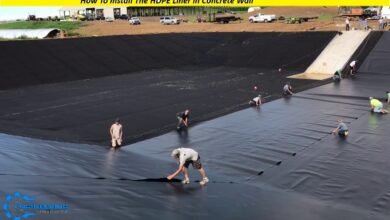How To Find The Derivation Of 0.42D Bent Up Bar

How to Find the Derivation of 0.42D Bent up Bar
In this article I will find the Derivation of 0.42d |what is the Crank Length of Bent up Bar |How to Find the Derivation of 0.42D Bent up Bar.
How to Find the Derivation of 0.42D Bent up Bar
Does anybody, know what is the length of a 45° bent-up bar?

This length is 0.42D or the length is 1.42D?
If you know this length is 0.42D Then is will explain how to come to the length of 0.42D
Now,
We calculate what is the 0.42D for bent up bar are
As you’ll observe within the diagram given below, the crank bar is bent at a 45° angle (by theory) in block reinforcement, & currently, we are going to derive the length of that bent-up half.

Let us draw a triangle in an exceedingly crank bar by naming the three corners as a, b, & c with sides ab, bc, & ca as shown below. Here, the bent-up part of the crank bar is called “side ac”.
Calculating the length of side ac:
Angle a = 180° – (angle b+ angle c )
∠a = 180° – ( 90° +45°) = 45°
As it is symmetrical right angle triangle,
ab = bc = D
By Pythagoras theorem
ac2 = ab2+bc2
ac2 = D2+D2
ac2 = 2D2
ac = √ 2D2
ac = 1.414D
Say ac = 1.42D
Derivation of 0.42D:

The cutting length formula for the crank bar, for the above-given drawing, is given by
The Cutting Length Formula for the Crank bar = Clearspan +2bends + 2x extra crank length) – (2× 90° bend + 4× 45°bends)
When we add the Clear Span within the Calculation, it means Already add side bc and side CB we need to take an Additional Remaining Length of the side ac by Deducting side bc from it.

Additional Crank Length = ac – bc
Additional Crank Length = 1.42D – 1D
Additional Crank Length = 0.42D
So, That’s What 0.42D Stands for Within the Cutting Length Formula.
Learn More
Bar Bending Schedule For R.C.C Beam
How To Estimate Per Meter Weight Of Reinforcements Steel Bar
The Alternate Technique for Confirmation
Known data:
side ab = D,
sin45°= 1/√2
sin45°=Perpendicular/ Hypotenuse
As per Above Triangle
sin45°=ab/ac
sin45°=D/ac
1/√2=D/ac
By Cross Multiplication,
ac ×1 = √2 D
ac = 1.414 D
We Can say Length of ac = 0.42D
Extra Crank Length = ac bc or cb
Extra Crank Length = 1.42D – 1D
Extra Crank Length = 0.42D
So this is The Method to Find the Derivation of Crank Length of Bent up Bar = 0.42d
Learn More
What Are The Causes Of Building Cracks
Bar Bending Schedule For The Staircase
Thanks for Reading Article Get more Information and share it with others.
JOIN US & LIKE MY OFFICIAL FACEBOOK PAGE
THANKS








One Comment